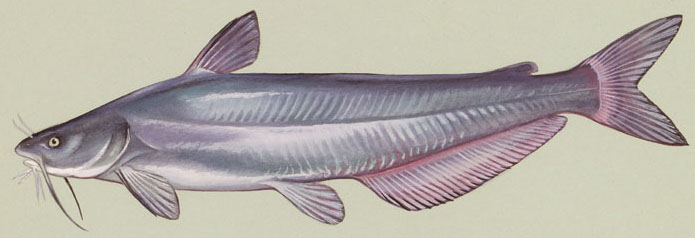Sporting Life

Planning for the Angler’s New Year
By Dennis Doyle
It’s cold and miserable these days but springtime looms and there are some interesting days ahead for Maryland’s many anglers. The species available these days offer some great sporting opportunities not to mention excellent table fare for the coming year. In order of their appearance and numbers, currently, they are white perch, northern snakeheads, blue catfish, flathead catfish and channel cats.
White perch come soonest on the schedule this spring, the yellow perch run having recently peaked and while their numbers will remain high the next couple of weeks they are destined to drop off as the females return to their lower tributary summertime haunts with the smaller males remaining on the spawning grounds until the girls are all gone.
The white perch, Maryland’s sole resident species that continues to be populous despite the pressure of a dominant commercial fishing presence, growing predation from the invasive snakeheads, catfish and an increased recreational harvest, will be ascending the tributaries as you read this and reproducing in (hopefully) their traditionally fecund manner.
Since they begin to spawn as early as two to three years of age there is some indication that their population will continue to provide Tidewater anglers with some of the best sporting panfish and fish fries available anywhere. The most popular method of securing a supply (there is no minimum size and no possession limit) is casting a bobber near shallow, tributary headwaters adorned with a shad dart (¼ to 1/16 ounce) in bright colors with a grass shrimp, minnow or worm impaled on its small hook. Deeper areas are usually probed with light, half to one-ounce sinkers on a hi-lo rig, number 4 hooks and the same bait types.
Both the white and yellow perch will remain in the fresher water of the tributaries until late May when their spawns are finally completed. The whites will then spread back throughout the tributaries and also school well out into the Bay proper in depths up to 20 feet. Yellow perch tend to remain mostly in tributary waters.
The invasive northern snakeheads will next take over the spotlight as they swarm the shallows to spawn in May. A relatively recent arrival from Asia via exotic aquarium releases, the snakeheads have quickly established residence throughout the Bay’s tributaries and proven a popular gamefish. A freshwater fish with some tolerance for brackish waters, it is not often found in the Bay proper.
Easy to fillet boneless with firm sweet white meat, these fish grow quickly, are mature and reproduce at two years, reach 36 inches or more within five to six years and attack surface baits, crankbaits, spinner baits, paddle tails and other soft plastic jigs as well as live-lined minnows, small perch and spot.
Catfish are the last of the new arrivals to the Chesapeake, though they’ve actually been with us for a while via Pennsylvania’s Susquehanna River and Virginia’s James River; their numbers are increasing rapidly as our rockfish population continues to struggle. The blue catfish is the star of this lineup with the state record at 84 pounds (a mark sure to fall given that the current Virginia record is a fish of 140 pounds). Flathead cats are not as numerous as the blues but are almost as large. There is a current Maryland record of 57 pounds but the Kansas record cat of 123 pounds gives a better idea of their potential. The flathead is the equal of the blue cat on the table.
The channel catfish is last but currently the most numerous in the Tidewater. Not quite the equal of the blue and flathead table-wise they are still popular when fried in finger-sized pieces. Channel cats can provide plenty of weight to a seafood table and a considerable battle on light tackle. The state record is almost 28 pounds but there’s a 58-pounder in Louisiana on the books so there will be plenty of room to improve that mark as well.
All of the cats can be taken throughout the Bay and up into the tributaries by traditional methods of bottom fishing in depths mostly to 30 feet. The baits can be many with raw chicken breast, chicken livers, cut perch, spot and menhaden as well as shrimp and nightcrawlers being some of the better offerings to tempt them. Hooks in the 5/0 to 10/0 size and leaders to 50 pounds will battle them to your boat but you better have a sizeable net to get the larger specimens aboard.
